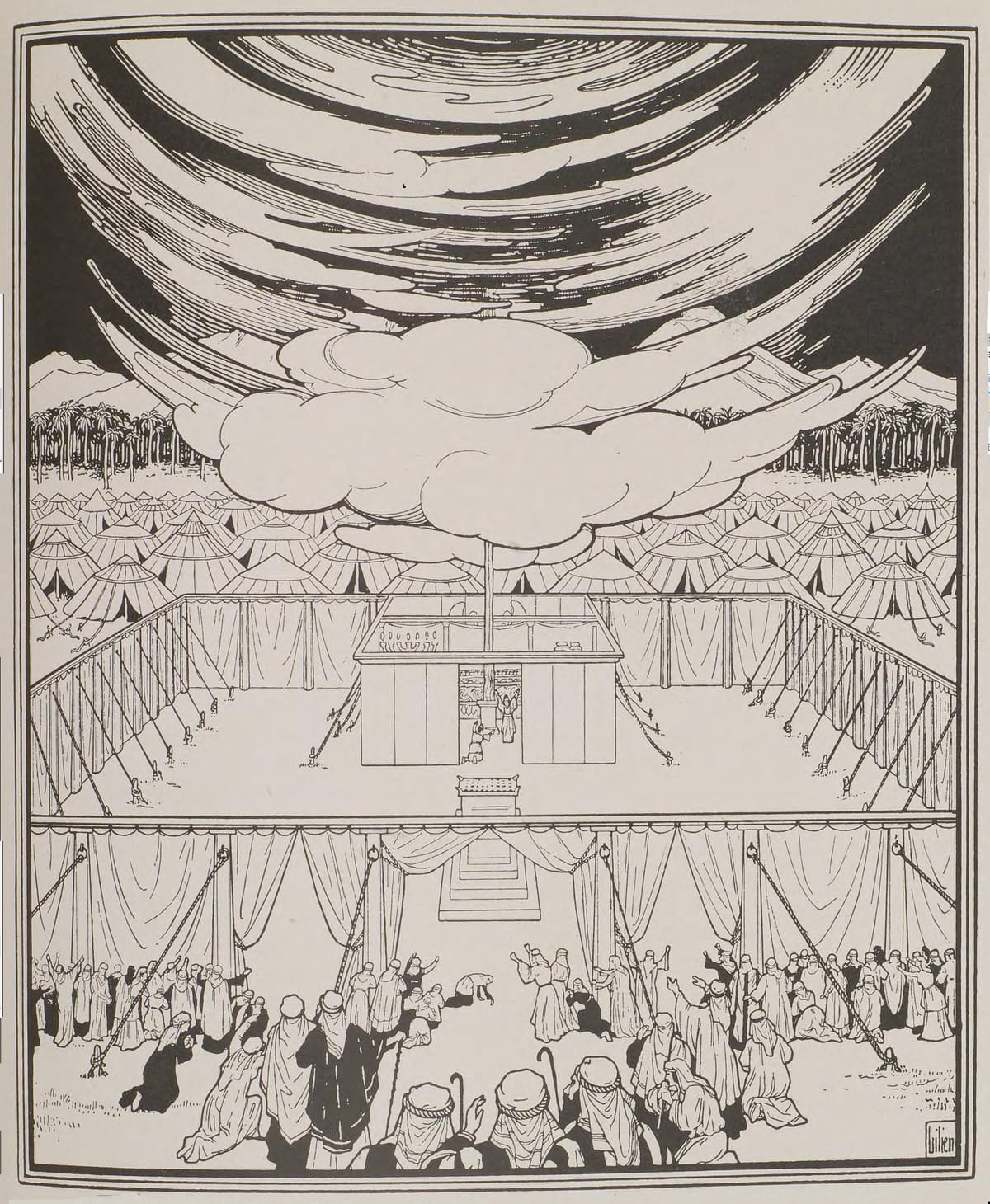Pekudey / פּקודי

This is a weekly series of parsha dvarim written by a frum, atheist, transsexual anarchist. It's crucial in these times that we resist the narrative that Zionism owns Judaism. Our texts are rich—sometimes opaque, but absolutely teeming with wisdom and fierce debate. It's the work of each generation to extricate meaning from our cultural and religious inheritance. I aim to offer comment which is true to the source material (i.e. doesn't invert or invent meaning to make us more comfortable) and uses Torah like a light to reflect on our modern times. The full dvar is paywalled for four weeks to help me sustain my work as a writer; if you can't afford to subscribe, email me and I'll send you the link for free.
An appeal: It's Ramadan, which means it's a great time to donate to people in Gaza. My friend Madleen needs help to support her children. This fundraiser is run by a friend of a comrade, and I talk to Madleen regularly. Any amount helps, no matter how small.
Content note: Khurbn (Holocaust) images and stories; images of cultural genocide in Palestine.
This is the final parsha in the book of Shemoys (Exodus). The bulk of the text is dedicated to the details of erecting the Mishkon (Tabernacle, or meeting tent) and all the craft work required to fulfill the commandments to build and furnish it. We also get further details on how to dress and consecrate the Kohanim. Then, in the final verses, some narrative: when Moishe Rebeynu finishes setting up the Mishkon, a fiery cloud covers the Mishkon and it was filled with the divine presence of Hashem.
While our world appears to go up in smoke, we continue to carry our tradition through exile just like Moishe and the Israelites carry the Mishkon. Blessedly, our tradition places a high importance on remembrance, words and actions. Creation is a dialogue between us and Hashem, and it is urgent that we do our part.
וּבְהֵעָל֤וֹת הֶֽעָנָן֙ מֵעַ֣ל הַמִּשְׁכָּ֔ן יִסְע֖וּ בְּנֵ֣י יִשְׂרָאֵ֑ל בְּכֹ֖ל מַסְעֵיהֶֽם׃
וְאִם־לֹ֥א יֵעָלֶ֖ה הֶעָנָ֑ן וְלֹ֣א יִסְע֔וּ עַד־י֖וֹם הֵעָלֹתֽוֹ׃
כִּי֩ עֲנַ֨ן ה' עַֽל־הַמִּשְׁכָּן֙ יוֹמָ֔ם וְאֵ֕שׁ תִּהְיֶ֥ה לַ֖יְלָה בּ֑וֹ לְעֵינֵ֥י כׇל־בֵּֽית־יִשְׂרָאֵ֖ל בְּכׇל־מַסְעֵיהֶֽם׃
When the cloud lifted from the Mishkon, the Israelites would set out, on their various journeys;
but if the cloud did not lift, they would not set out until such time as it did lift.
For over the Mishkon a cloud of 'ה rested by day, and fire would appear in it by night, in the view of all the house of Israel throughout their journeys.
Shemoys 40:35–38
Hashem appears on Earth in the extraordinary physical manifestations of clouds and fire several times throughout Shemoys: through the burning bush (3:2); in the wilderness as a pillar of cloud (13:21) and then a pillar of fire and cloud (14:24); atop Sinai in fire and smoke (19:18) and cloud (24:16); and now upon the Mishkon.
This is incredible imagery and some fun, creative horror writing. Imagine the terror as you see the Mishkon—your holiest site, which you've personally labored over constructing—in smoke and flames. You're confused and upset as you try to take in this disorienting scene. But in the morning, the fire is gone and the tent is unharmed.




Three synagogues set ablaze by Nazis: Börnerplatz Synagogue, Frankfurt am Main, photographed 10 November 1938, still smoldering the morning after Kristallnacht (top left); the large Synagogue of Koło, Poland, 20 September 1939 (top right); Łęczyca Synagogue, Łęczyca, Poland, December 1939 or early 1940 (bottom two).
It isn't difficult to imagine the terror that the Jews must have felt when the Mishkon was ostensibly on fire. The Khurbn (Holocaust) imagery of burning shuls is seared into my memory, as if I lived it myself. Just one such example, pictured above, is the Łęczyca Synagogue in Poland:
In December 1939 Jewish families were evicted from many streets and from the buildings around the marketplace to be segregated in a separate, crowded Jewish district. To further repress and humiliate the Jews the Germans forced them to destroy their own cemetery and set fire to their synagogue. The Judenrat was compelled to sign a declaration that the "arson" was committed by Jews, and a heavy fine was imposed upon the community. During 1940 groups of Jews left the town, either voluntarily or by force. In January 1941 all Jews were ordered to appear in the marketplace with their kitchen utensils and some bedding. Some 600 people were then selected and sent under German police convoy to Poddębice. Another group of 450 were sent to Grabow. The Jewish area was then surrounded with barbed wire and as a result of famine and lack of fuel epidemics broke out. The final liquidation of the community took place on April 10–11, 1942, when the remaining 1,750 Jews were sent to the death camp at Chełmno.
—Danuta Dombrowska, Encyclopedia entry on Łęczyca
Nagrobki były ułożone do góry symbolami religijnymi, by przechodnie je deptali.
The tombstones were arranged with religious symbols facing upwards, so that passers-by would trample on them.
—"Represje wobec Żydów w Łęczycy" ("Repression against the Jews of Łęczycy"). Content note for that link:Holocaust images of desecrated Jewish dead
The photographs are striking and upsetting enough, the but details are unimaginably cruel. The destruction of the fire is not as devastating as the indignities, the deliberate and extreme acts of violence, the erasure of history.
Hashem isn't the cloud or the fire, but those things represent a clear indication of Hashem's presence. While Moishe has a unique relationship with Hashem, the rest of the Jews are still bearing witness to divinity. This highlights a paradox: Hashem is totalizing, everything and everywhere; and Hashem dwells only/especially in specific holy places and times. Unfortunately for us, we're living in times where the fires are destructive rather than divine.